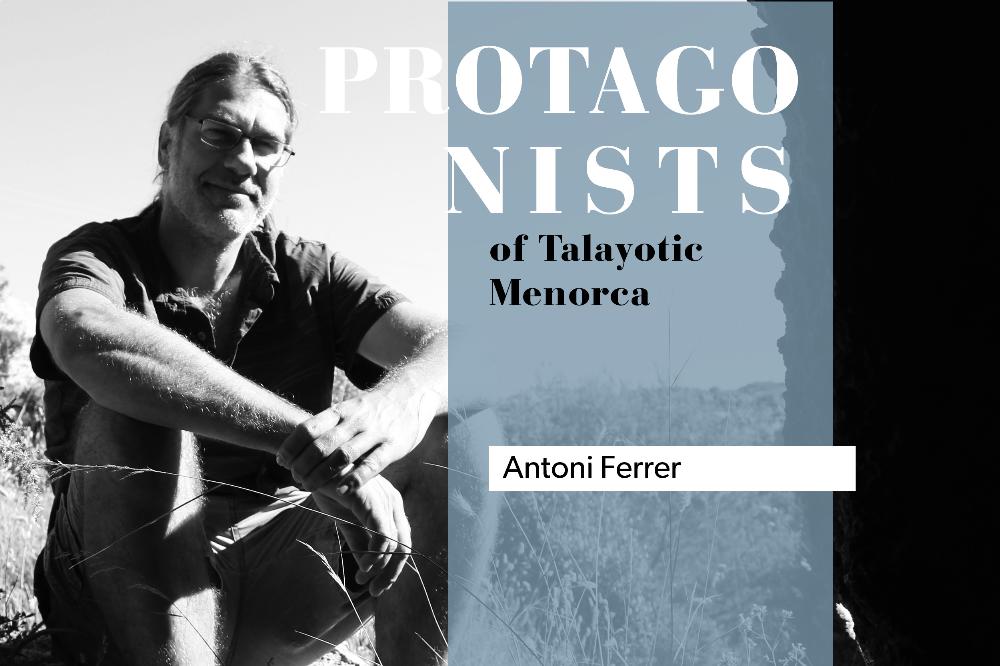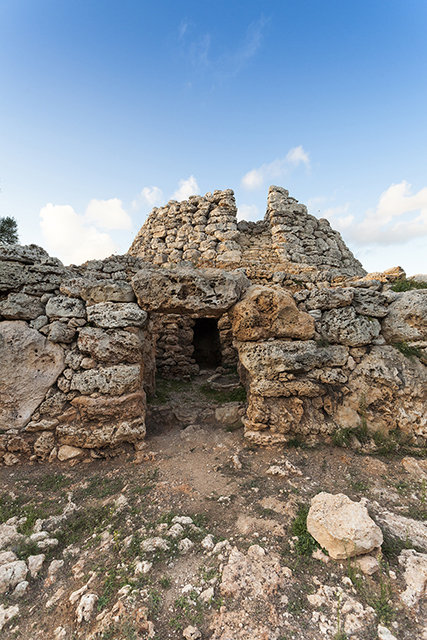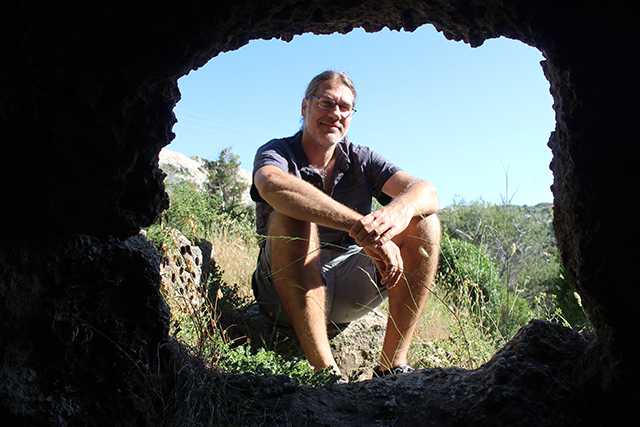 The Minorcan archaeologist Antoni Ferrer is one of the architects of the reconversion of the Talayotic Menorca candidacy since 2017. Insular Director of Cultural Affairs and Heritage between 2015 and 2019, he is specialized in the prehistory and protohistory of the Balearic Islands. With wide experience in the field of research, he currently co-directs the projects of Cornia Nou and Cala Morell in Menorca and Sa Ferradura in Mallorca.
The Minorcan archaeologist Antoni Ferrer is one of the architects of the reconversion of the Talayotic Menorca candidacy since 2017. Insular Director of Cultural Affairs and Heritage between 2015 and 2019, he is specialized in the prehistory and protohistory of the Balearic Islands. With wide experience in the field of research, he currently co-directs the projects of Cornia Nou and Cala Morell in Menorca and Sa Ferradura in Mallorca.
How was your interest in Archeology born? Why did you choose the Talayotic culture?
The past has interested me since I was little. Nature is also something that has always drawn my attention powerfully. I believe that these two interests converge in Archeology, not just because part of the archaeologist's work takes place in the field, but also because one of the aspects that Archeology studies is the way in which human beings of the past related to their environment.
Talayotic culture, and Prehistory in general, is especially intriguing to me because people at that time had a radically different way of understanding the world than we do. With an educated person from Roman or Medieval times we could talk about many topics (education, economics or even politics) and we would see that, despite the differences, there are many shared concepts. With a person from the Talayotic era it would be much more complicated, but not because they were primitive, theirs was a rich and complex culture.
You are one of those responsible for the reformulation of the candidacy after the first attempt to enter in the World Heritage List (2017).
Which has been the most difficult part of this task?
For me, by far, the biggest complications have been the administrative issues. We have an administration with many control measures to prevent the misuse of public resources, and this means that hiring services (such as the drafting of a management plan for the candidacy’s properties) is an extremely long and laborious task.
Related to the new file, which do you think, is the main value of our candidacy that can tip the balance in favor of becoming World Heritage?
As Cipriano Marín, the current coordinator of the candidacy’s file, once said: Menorca’s archaeological heritage is already world heritage; our job is to get UNESCO to notice it. To achieve this goal, the vision of the entire island landscape as an object of archaeological study is essential.
What are the main differences between the Menorcan and Majorcan talayotic cultures?
Although they are two sister cultures, there are palpable differences, for example in the architectural field. The talayots of the two islands are quite different. It is often said that architecture is the embodiment of the social and ideological schemes of a society. If it is so, these differences between the constructions of the two islands possibly have a background that right now we can only intuit.
As a researcher, you have recently published with other colleagues a paper that proposes a new interpretation about the taula enclosures. What is your hypothesis and what was the process to get there?
Broadly speaking, the hypothesis is that there is a parallel between the structure of the taula enclosures and the one of the houses from the same period. Following this idea, the place occupied by the taula is analogous to the one occupied by the door that gives access to the most important room in the houses. The taula, therefore, could represent a door. The statistical study about doors and taulas’ proportions has made it possible to determine that there is a similarity between the two elements.
Among the recent studies on Talayotic culture, which ones would you highlight?
I believe that all the projects that are currently being developed are providing and will provide valuable data to better understand the island’s prehistory. If I have to highlight only two, perhaps one would be the Modular project, which has provided new information on the Punic influence during the Late Talayotic period. Another remarkable project is the one headed by Marta Portillo: based on the analysis of current cow, sheep and pig excrements, she is establishing patterns that will help us obtain more information about the remains of prehistoric excrements that we find in archaeological sites. For example, it will be possible to know if cow excrement was used to make fire or as a construction material, as occurs in some cultures.
Nowadays, you co-direct the Cornia Nou and Cala Morell research projects in Menorca. Which are the results obtained in 2020? And what do you have planned for the 2021 campaign?
2020 has also been a difficult year for Archeology, but we have been able to work. In Cornia Nou we have documented the remains of a possible initial Talayotic period house, which is interesting because it is not known how the houses of that time were like. In the case of the Cala Morell site, although we have also done a bit of field work, we have focused on laboratory work and the results will be published throughout this year. The 2021 campaigns will follow the same lines as the previous year.
Are you involved in any other projects this year?
Yes. The Institut d'Estudis Baleàrics opened a call for research grants last year. I presented a project to study the lithic industry (stone tools: mills, mortars, hammers ...) of various archaeological sites in Menorca and I got one of the scholarships. This job will occupy part of my year.
 As a popularizer of Talayotic culture, you have played a prominent role in the creation of the Sitjot collection. Do you think there is still a certain ignorance about the Menorcan Talayotic culture among the local population? What can be improved to increase interest?
As a popularizer of Talayotic culture, you have played a prominent role in the creation of the Sitjot collection. Do you think there is still a certain ignorance about the Menorcan Talayotic culture among the local population? What can be improved to increase interest?
Undoubtedly, there is still a certain lack of knowledge. But we must be aware of one thing: although it is advisable to have basic knowledge about all aspects of the reality that surrounds us, we cannot pretend that everyone is deeply interested in all areas of knowledge. I recognize that my intellectual interests, although not limited to Archeology, are very focused. In this sense, I believe that the objective of the administration, through the educational system, should be to ensure that there are no citizens without any type of intellectual concern. I think that one of the worst things that can happen to a person is to suffer a complete lack of curiosity to learn.
On the other hand, the administration must try to ensure that everyone has the tools and materials available to satisfy these interests. This implies, among other things, to incentivize scientific dissemination and synthesis publications. I can accept that the ignorance of a person about a subject is motivated by a lack of personal interest in that specific topic, but I believe that it should be avoided at all costs that ignorance is motivated by the lack of means to learn.
Finally, we must try to make everyone understand the importance and complexity of the fields of human knowledge, beyond their personal interest. It is inevitable that we all have an opinion without sufficient knowledge of the facts. Over the last year, for example, we have had to hear on a regular basis how people without any scientific training gave their opinion on medical issues and even disqualified the opinions of the scientific community. We must fight this disregard for knowledge, whether it is directed towards Epidemiology, Archeology, or any other serious discipline.